See the Calendar and the flyer for details:
Author Archives: bcpoa
USFS Aerial Assessment
The USFS recently published an aerial survey of forest disease and insect damage in the Bozeman area. The full map is here:
https://www.fs.usda.gov/Internet/FSE_DOCUMENTS/fseprd622553.pdf
Here’s an excerpt for Bridger Canyon:
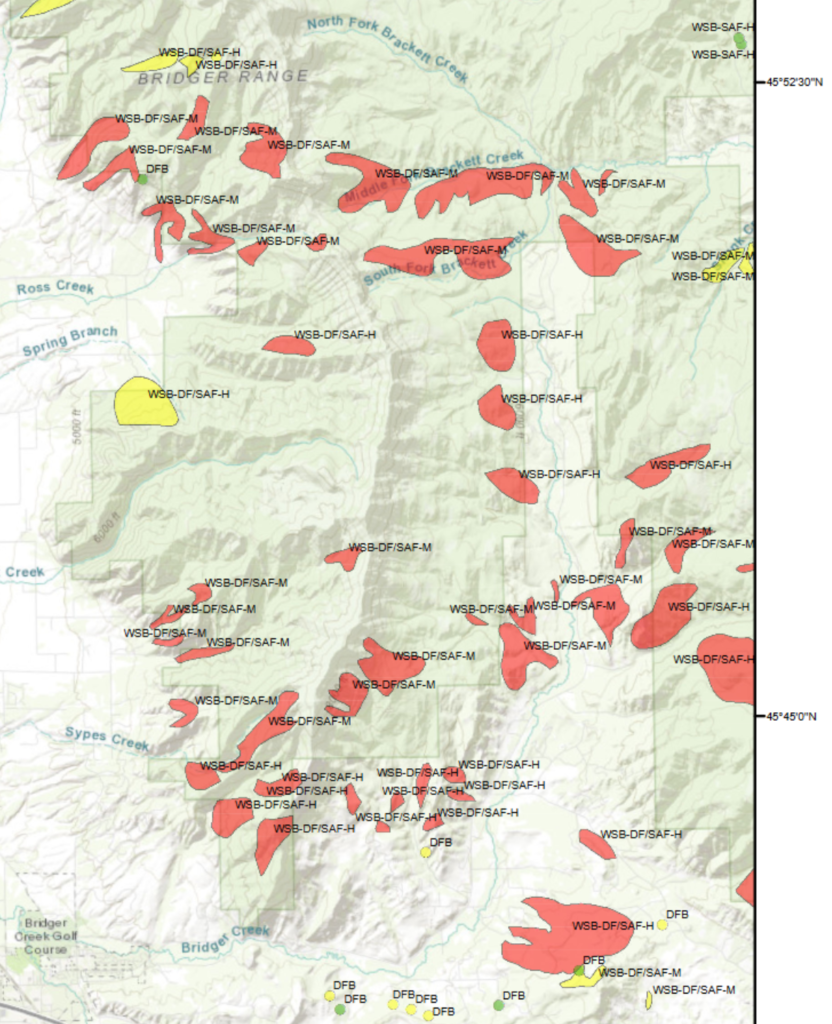 Most of the damage is identified as WSB-DF/SAF-H = Western spruce budworm in Douglas Fir/Subalpine Fir with heavy defoliation. There’s also some DFB = douglas fir beetle, mainly around Green Mountain and Kelly Canyon.
Most of the damage is identified as WSB-DF/SAF-H = Western spruce budworm in Douglas Fir/Subalpine Fir with heavy defoliation. There’s also some DFB = douglas fir beetle, mainly around Green Mountain and Kelly Canyon.
General Meeting Presentation
We had a great General Meeting last night. Thanks everyone for coming!
Here are the presentation slides, in case you missed it:
Download: BCPOA general mtg 2019.pdf
2019 Newsletter & General Meeting, June 11th
The 2019 General Meeting of the BCPOA membership will be held on June 11th at the fire station community room. Please see the agenda in the newsletter for details:
Download BCPOA newsletter 2019 v3.pdf
Note: the date for the Pancake Breakfast has changed to September 21st.
Custer Gallatin Forest Plan Revision
The Custer Gallatin National Forest is currently revising its long term plan. This will shape many decisions for decades to come.
Comments are open through June 6th, so you can still influence the planning process. See the Public Involvement links on the FS’ master page for the new plan and specifically How to Comment on the Proposed Action. There’s a helpful Roadmap to the plan.
Specifics on Bridger Canyon and the Crazies start at page 130 of the Proposed Action, which you can review here. We’ve reproduced the maps from the plan here, for quick access:
For comparison, the current 1987 plan, as amended through 2015, is here.
14.2 Repealed
The hearing went against us this morning – 14.2 was repealed.
I’m overwhelmed by the incredible showing we had in written testimony, and at the hearing. There were dozens of thoughtful letters on the record, and a dozen or so spoke. This time, the Commission did at least devote more attention to the arguments raised by Bridger Canyon residents, and I think the message, that zoning is important to people, came across loud and clear.
I think the Commission’s decision rests almost entirely on a perceived principle, that each legal parcel should have one building right. This principle doesn’t have much basis in law; it’s simply what the Commission was comfortable with. (Recently, Murr vs. Wisconsin tested this in the Supreme Court, and zoning mergers were upheld. Even the dissent in that case agreed that it was necessary to strike a balance between private property and the common good.)
BCPOA will consider what next steps, if any, are in order at its meeting tonight. The law does not favor appeals of legislative acts like this (which may be fortunate in general, but unfortunate in this case).
No matter what, we need to keep our eyes on the prize – getting the comprehensive update finished to resolve some of the more dangerous ambiguities in the current zoning.
Dark Skies in Bridger Canyon
New Page of County Contacts
We’ve supplemented the Zoning information page with a list of resources for getting in touch with County departments and commissions, and submitting testimony to hearings. Check it out!
Zoning Regulation 14.2 Repeal – Survey Results
The bottom line appears to be that Canyon email list members strongly oppose repeal of 14.2:
The full results are here:
Zoning Regulation 14.2 Repeal – Background
The Planning Department proposes to repeal section 14.2 of the BC zoning regulation:
14.2 Building Sites Which do Not Conform to the General Regulations.
a. In any district, notwithstanding other limitations imposed by this Regulation, structures permitted in said district may be erected on any single lot of record on the effective date of this Regulation. Such lot must be in separate ownership. A lot of record that does not meet lot area or lot width requirements must still meet other requirements of the district. If two (2) or more lots and portion of lots with continuous frontage in single ownership are of record at the time of adoption or amendment of this Regulation, and if all or part of the lots do not meet the requirements established for lot width and area, the lands involved shall be considered to be an undivided parcel for the purposes of this Regulation. Where lots are larger than required by this Regulation, said lots may be subdivided into smaller lots except no parcel may be divided so as to create a lot smaller in lot width or lot area than required by this Regulation. [Emphasis Added.]
This provision reduces the density rights of small parcels that were adjacent and under the control of a single owner as of the inception of zoning in 1971. This is fairly common in other jurisdictions, and has been widely upheld in the courts (see Gallik testimony for BCPOA below). It appears in at least one other Gallatin County zoning regulation.
If repealed, building rights spring into existence on some number of lots that have not had them since 1971, with attendant side effects for neighbors and density. Repeal also resolves a complaint, arising from the county’s issuance – in error – of a land use permit for a house on a very small, narrow lot along Bridger Canyon Rd.
No one knows exactly which or how many parcels are affected, because it is difficult to determine common ownership as of 1971 en masse. A title search is required in each case. See also: maps of potentially affected parcels.
Summary of Arguments
| Supporting Repeal | Opposing Repeal (BCPOA Position) |
| It’s a taking. | It’s not a taking, according to the Supreme Court and many local jurisdictions. |
| All parcels of record should have a development right. | Elevation of lot lines above all other considerations has not been supported by the courts. |
| In 1971, people understood that all parcels would have development rights. | In 1971, the original zoning regulation included language very similar to 14.2. |
| Some owners benefit from developing their parcels. | Adjacent owners who relied on these parcels not developing are harmed. |
| It’s hard to administer. | The zoning does not exist for the convenience of administrators, and there may be other remedies than repeal. For example, the draft Admin regulations put the burden of proof for nonconforming parcel development on the owner. |
| It’s inconsistent with other districts. | At least one other, Sypes Canyon, has the same provision. |
| Some lots subject to the regulation have already been sold separately or developed. | This may have happened, but it is water under the bridge. No specific instances are known. |
| There’s no visible notice to prospective buyers, e.g., on plat maps or deeds. | This is true of many aspects of zoning. |
| Some small parcels are treated differently from others, on the basis of common ownership. | Equal protection is for people, not parcels. |
| Repeal does not conflict with the General Plan. | Repeal increases density, and keeping low density is clearly the primary goal of the General Plan. 14.2 was clearly a part of the original implementation of the General Plan. |
| It’s part of the standardization of administration. | Administration should not be one-size-fits-all where it affects the substantive provisions of the zoning. |
| Limited staff resources will be required to defend this provision. | Limited staff resources are required to defend every provision of the zoning; why single out this one? |
| It’s ambiguous, resulting in different interpretations by different people. | There is no evidence that this is a practical problem. |
| Parcels that were considered de facto merged become developable, having evaded separate taxation for decades; this is unfair for others who have carried the burden of taxation in the interim. | |
| It’s not spot zoning. | It is clearly motivated by a single complaint. |
| Repeal would minimize the probability of staff errors and litigation. | Since parcels potentially subject to 14.2 have now been identified, this is a much smaller risk in the future. In addition, the county’s own proposed administrative regulations provides a good way to handle nonconforming parcels, shifting the burden of proof to the builder. |
Documents
The 1971 Zoning Regulation – see section 9.2 for the language corresponding to 14.2 today: OrigRegsMerge.pdf
The 1999 regulation, containing section 14.2 as it reads today: regulations_012699.pdf
The Planning Department Staff Report for the Feb. 14th hearing: Bridger_ZTA_2.14.19_P&Z_Packet.pdf
BCPOA testimony on previous 14.2 proceedings:
From Richard Lyon: BCPOA-14.2.ProcessComparison.190124.pdf
From attorney Brian Gallik: BCPOA-Kensey.GallickSubm.190103.rgl.pdf
Status Update:
On Feb. 14th, the Planning & Zoning Commission approved the repeal, over the objections of a majority of written and oral testimony. The amendment passes next to the County Commission for ratification.
Testimony that arrived in the last few days before the hearing:
public comment 1 of 2.pdf
public comment 2 of 2.pdf
A transcript of the hearing:
Transcript Planning_and_Zoning_Commission_2019-02-14_09-30-31_AM.pdf

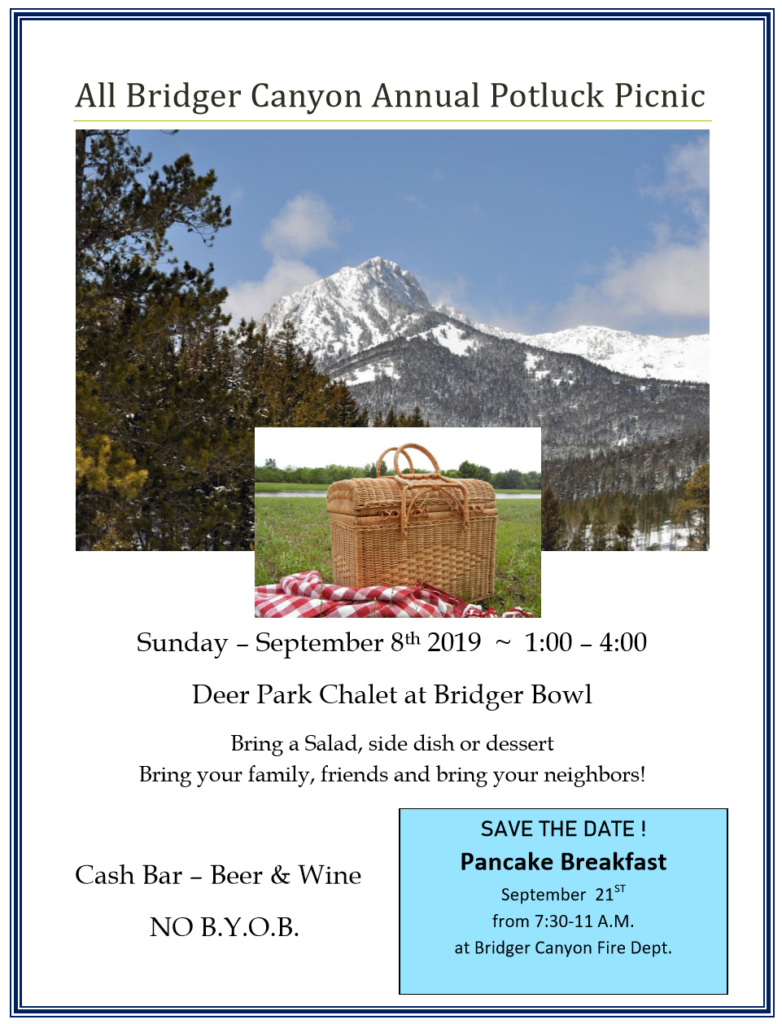
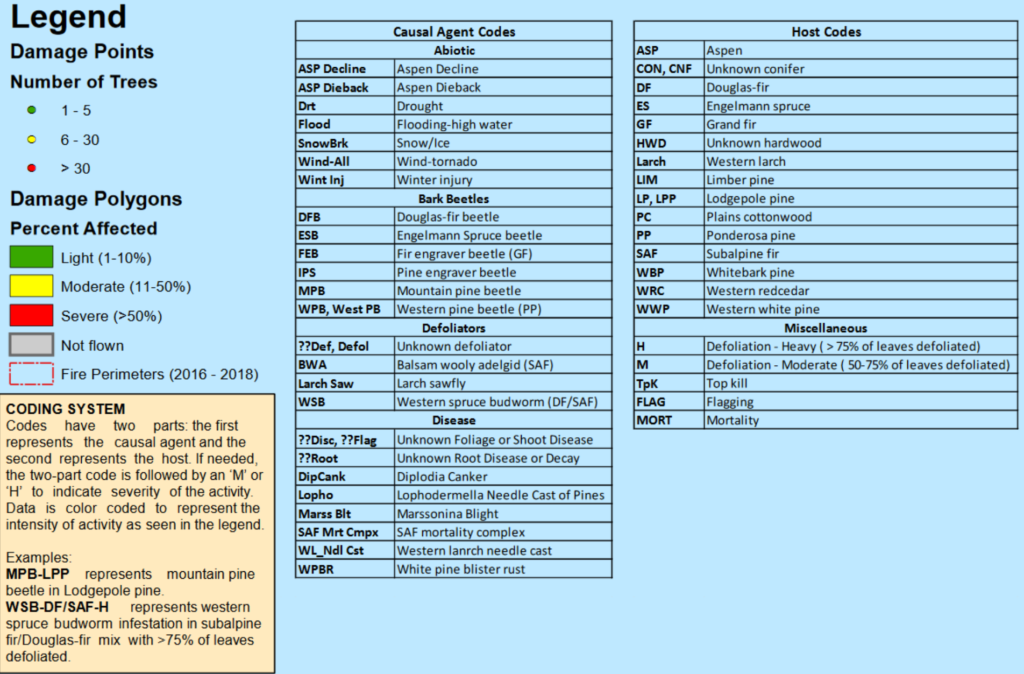
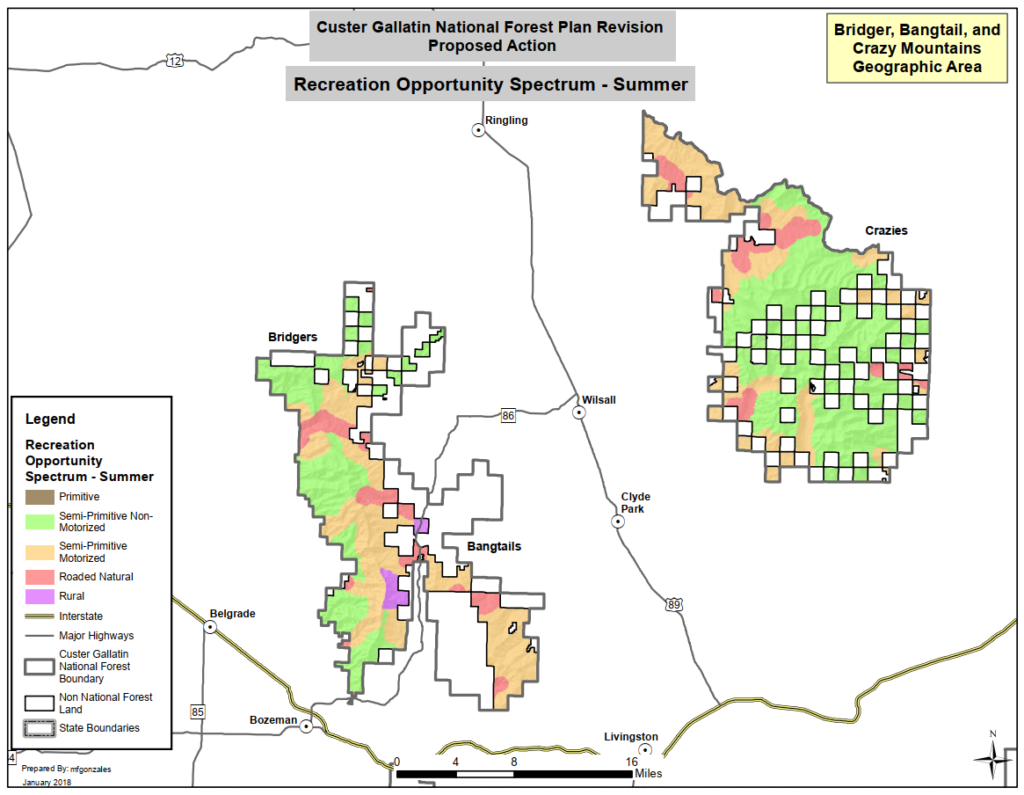
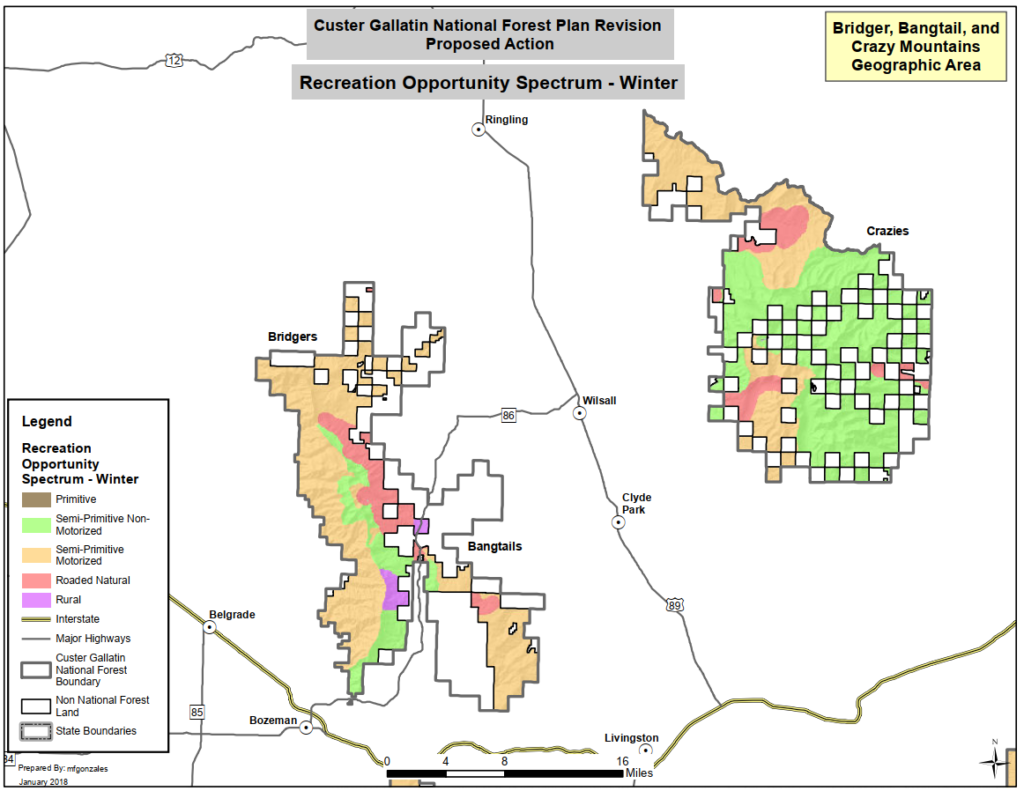
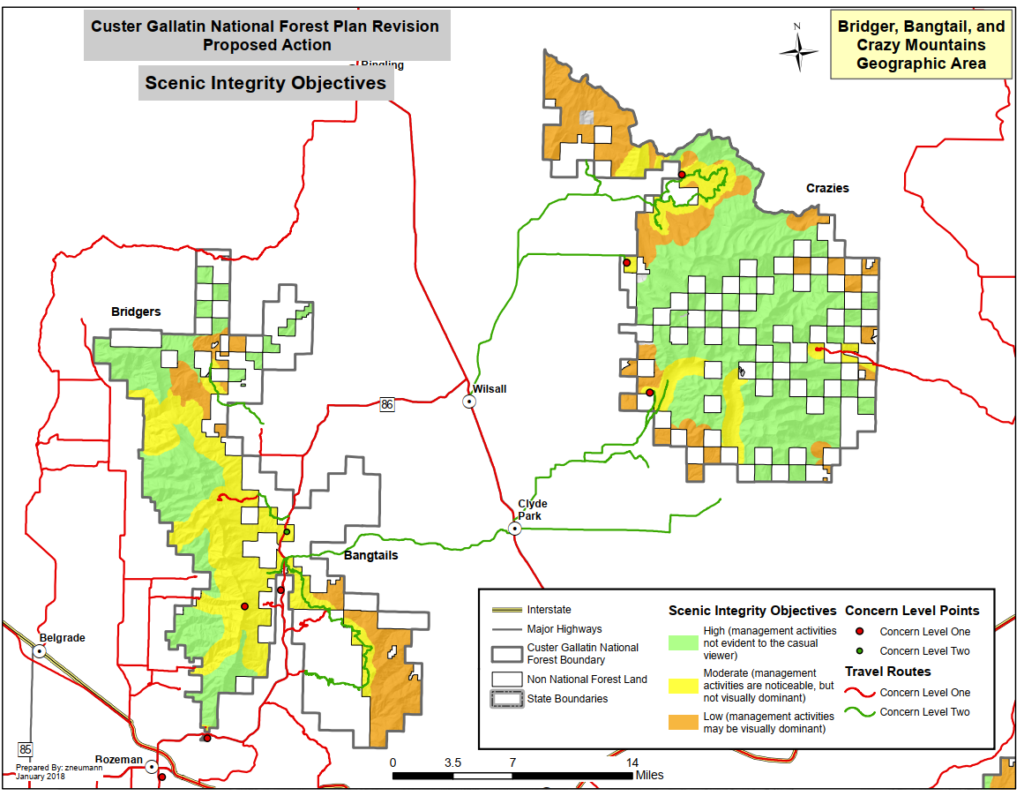
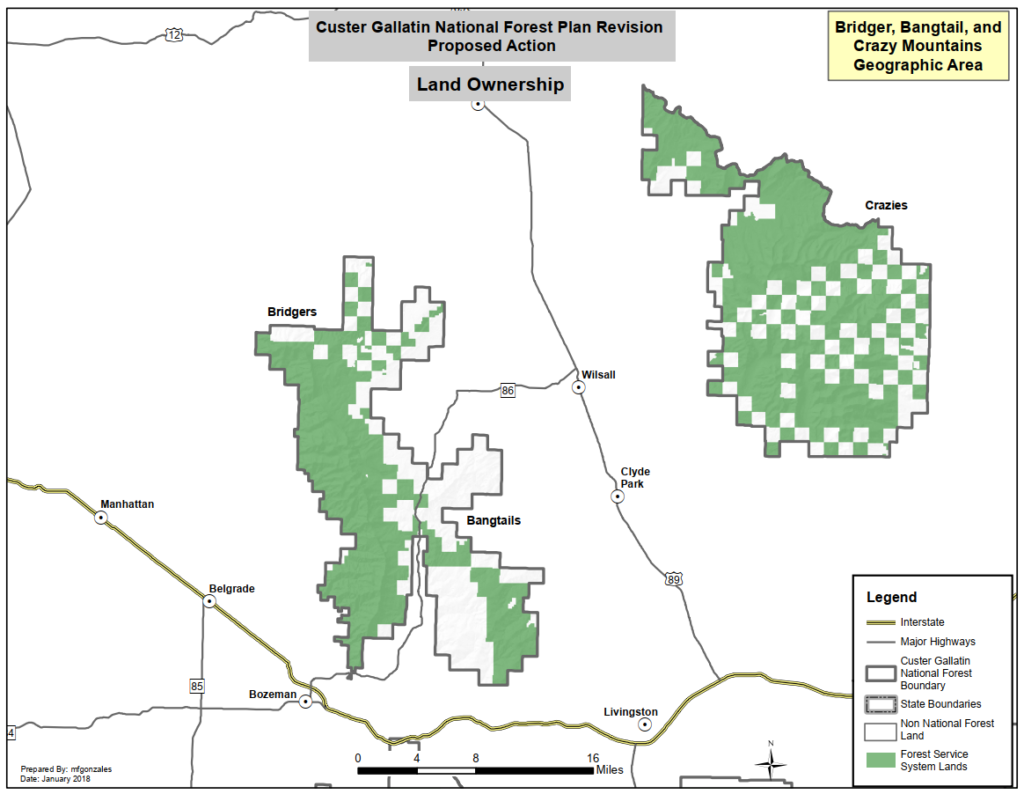
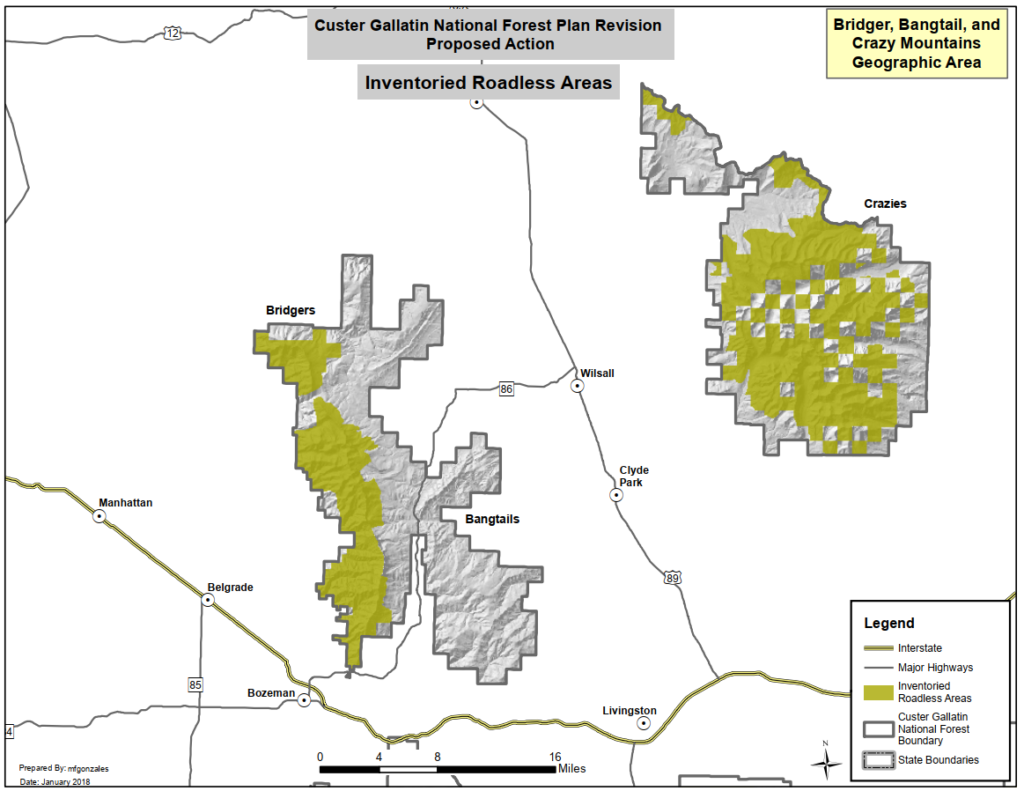
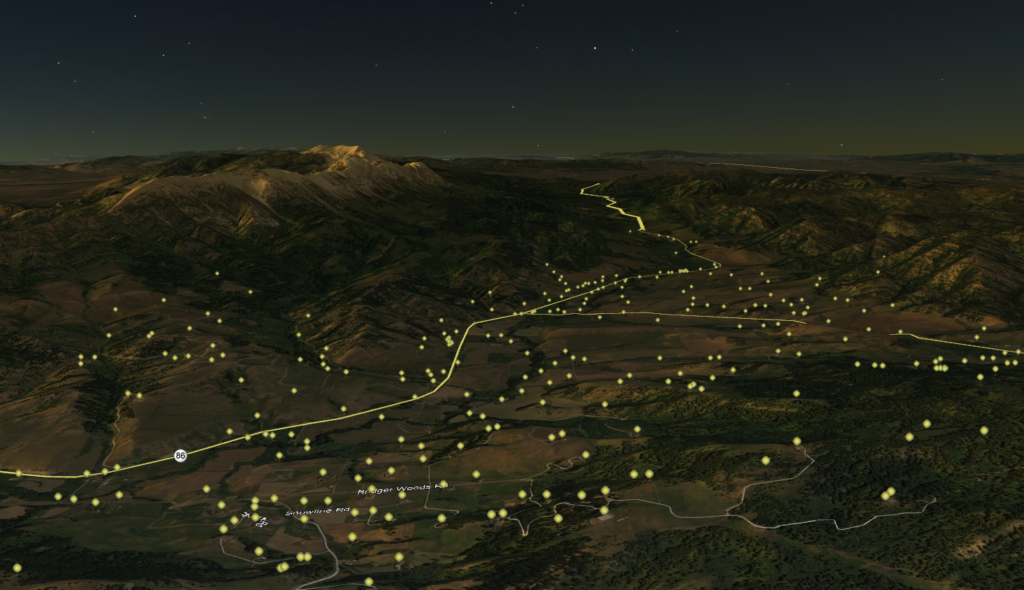
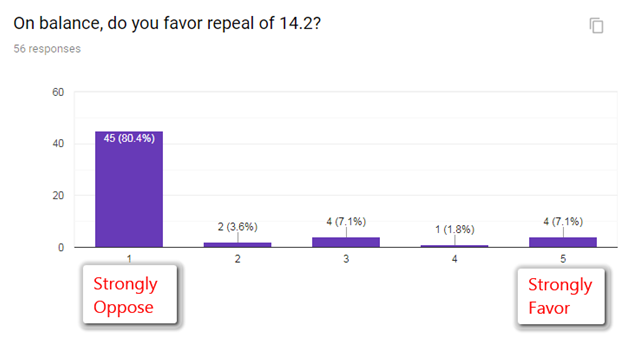


 Twitter
Twitter Facebook
Facebook RSS
RSS Email
Email